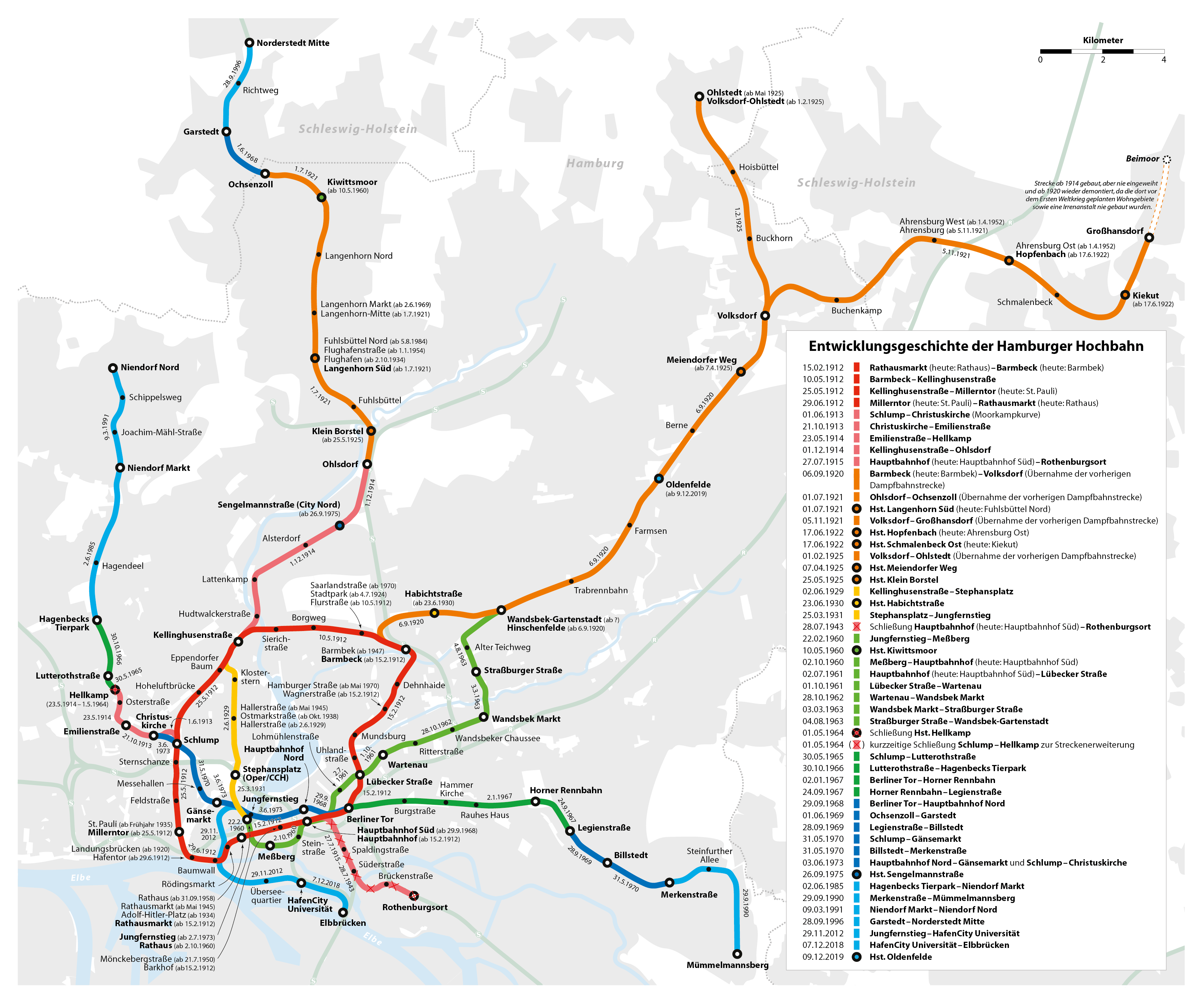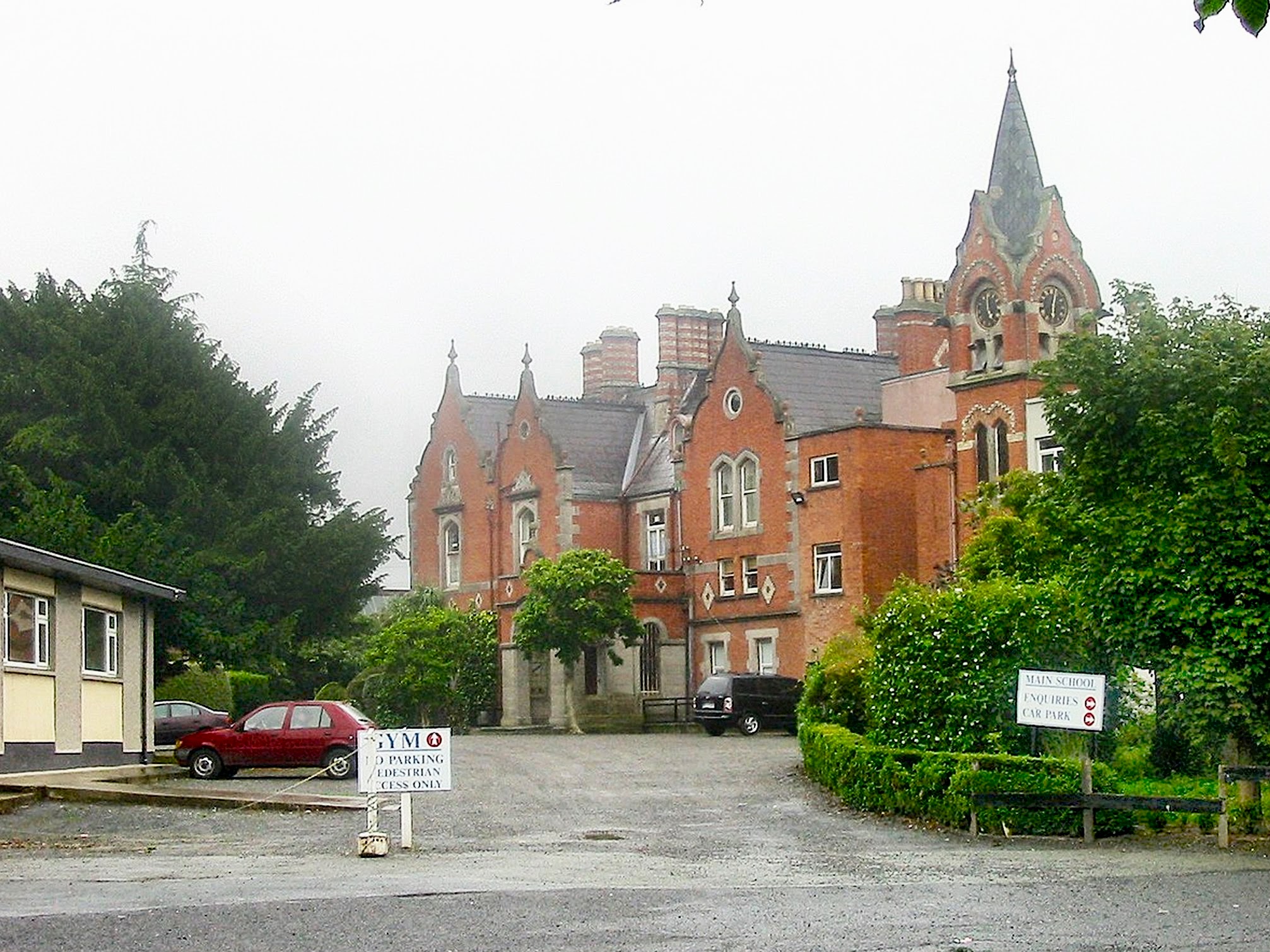|
Horner Rennbahn (Hamburg U-Bahn Station)
Horner Rennbahn is a metro station on the Hamburg U-Bahn lines U2 and U4. The underground station was opened in January 1967 and is located in the Hamburg district of Horn, Germany. Horn is part of the borough of Hamburg-Mitte. Service Trains Horner Rennbahn is served by Hamburg U-Bahn lines U2 and U4; departures are every 5 minutes. See also * List of Hamburg U-Bahn stations The following list contains all 93 stations of the Hamburg U-Bahn. The Hamburg U-Bahn is operated by the Hamburger Hochbahn (HHA) under the supervision of the Hamburger Verkehrsverbund. The majority of stations are located within the borders of th ... References External links Line and route network plansat hvv.de Hamburg U-Bahn stations in Hamburg U2 (Hamburg U-Bahn) stations U4 (Hamburg U-Bahn) stations Buildings and structures in Hamburg-Mitte Railway stations in Germany opened in 1967 1967 establishments in West Germany {{Hamburg-railstation-stub ... [...More Info...] [...Related Items...] OR: [Wikipedia] [Google] [Baidu] |
List Of Hamburg U-Bahn Stations
The following list contains all 93 stations of the Hamburg U-Bahn. The Hamburg U-Bahn is operated by the Hamburger Hochbahn (HHA) under the supervision of the Hamburger Verkehrsverbund. The majority of stations are located within the borders of the city of Hamburg — only nine stations are in the German state of Schleswig-Holstein outside the city limits — and all stations are located on the right bank of the Elbe river. Stations This list gives the name of each station, the lines serving the station, the quarter and the fare zones, in which it is located, and the date or dates opened. All stations are located in the fare zone ''Greater Hamburg Area''. Included are all stations currently open on the Hamburg U-Bahn. See also * List of railway stations in Hamburg * List of Hamburg S-Bahn stations Notes :A. The Hamburger Verkehrsverbund uses a system of concentric zones for the calculation of fares between stations. Fares between any station in one zone ... [...More Info...] [...Related Items...] OR: [Wikipedia] [Google] [Baidu] |
Hamburg
(male), (female) en, Hamburger(s), Hamburgian(s) , timezone1 = Central (CET) , utc_offset1 = +1 , timezone1_DST = Central (CEST) , utc_offset1_DST = +2 , postal_code_type = Postal code(s) , postal_code = 20001–21149, 22001–22769 , area_code_type = Area code(s) , area_code = 040 , registration_plate = , blank_name_sec1 = GRP (nominal) , blank_info_sec1 = €123 billion (2019) , blank1_name_sec1 = GRP per capita , blank1_info_sec1 = €67,000 (2019) , blank1_name_sec2 = HDI (2018) , blank1_info_sec2 = 0.976 · 1st of 16 , iso_code = DE-HH , blank_name_sec2 = NUTS Region , blank_info_sec2 = DE6 , website = , footnotes ... [...More Info...] [...Related Items...] OR: [Wikipedia] [Google] [Baidu] |
Island Platform
An island platform (also center platform, centre platform) is a station layout arrangement where a single platform is positioned between two tracks within a railway station, tram stop or transitway interchange. Island platforms are popular on twin-track routes due to pragmatic and cost reasons. They are also useful within larger stations where local and express services for the same direction of travel can be provided from opposite sides of the same platform thereby simplifying transfers between the two tracks. An alternative arrangement is to position side platforms on either side of the tracks. The historical use of island platforms depends greatly upon the location. In the United Kingdom the use of island platforms is relatively common when the railway line is in a cutting or raised on an embankment, as this makes it easier to provide access to the platform without walking across the tracks. Advantages and tradeoffs Island platforms are necessary for any station with many th ... [...More Info...] [...Related Items...] OR: [Wikipedia] [Google] [Baidu] |
Hamburger Hochbahn
Hamburger Hochbahn AG (HHA), founded in 1911, operates the underground system and large parts of the bus system in Hamburg, Germany. History The HHA was founded by Siemens & Halske and AEG as a consortium on 27 May 1911. The first chairman was Albert Ballin. From 1919 until 1978, the HHA operated a large tram network, and from 5 December 1921 the HHA also operated the first motor buses in Hamburg. After the acquisition of the ''Straßen-Eisenbahn-Gesellschaft'' (SEG) in 1919 and the ''Hamburg-Altonaer-Centralbahngesellschaft AG'' in 1923, the HHA had a rolling stock of 865 power cars and 930 trailers by 1928. The length of tracks was 217.33 km. In 1970 the length of the lines were only 82.7 km, in 1978 they were 89.5 km with 80 stations. In 1965, HHA was one of the founding members of the Hamburger Verkehrsverbund (HVV). Operations HHA operates about 111 bus routes and four underground lines. In spite of the "U" for "underground", large portions, especial ... [...More Info...] [...Related Items...] OR: [Wikipedia] [Google] [Baidu] |
Hamburger Verkehrsverbund
The Hamburger Verkehrsverbund (HVV) ( en, "Hamburg Transport Association") is a transport association coordinating public transport in and around Hamburg, Germany. Its main objectives are to provide a unified fare system, requiring only a single ticket for journeys with transfers between different operating companies, and to facilitate and speed up travel by harmonising the individual companies' schedules. At its inception in 1965, the HVV was the first organisation of its kind worldwide. As of 2010, the HVV provides rail, bus and ferry transportation for an area of 8,616 square kilometres with approximately 3.6 million inhabitants in the states of Hamburg, Schleswig-Holstein and Lower Saxony. The HVV has approximately 1.95 million customers on an average working day.HVV Figures 2006, pdf (Retrieved on May 18, 2008 from the HVV website) The HVV acts as the overall coordinating body for transport in the conurbation, with representation by the Hamburger Hochbahn (Hamburg ele ... [...More Info...] [...Related Items...] OR: [Wikipedia] [Google] [Baidu] |
Hamburg U-Bahn
The Hamburg U-Bahn is a rapid transit system serving the cities of Hamburg, Norderstedt and Ahrensburg in Germany. Although referred to by the term U-Bahn (the "U" commonly being understood as standing for "underground"), most of the system's track length is above ground. The network is interconnected with the city's S-Bahn system, which also has underground sections. It is operated by Hamburger Hochbahn within the Hamburger Verkehrsverbund (HVV). It was opened in February 1912, and comprises four lines serving 93 stations, with a route length of in 2019. History In 1906 the Senate of Hamburg awarded a contract for the Elevated and Underground Railway to Siemens & Halske and AEG of Berlin. The first stretch was completed on 7 October 1906. This was followed in 1911 with the founding of the ''Hamburger Hochbahn Aktiengesellschaft'' (HHA). Thus Hamburg became the third German city (after Berlin, 1902 and Schöneberg, 1910) to have a U-Bahn (then known as the Elevated and Un ... [...More Info...] [...Related Items...] OR: [Wikipedia] [Google] [Baidu] |
Hamburg-Horn
is a district in the borough Hamburg-Mitte, in the eastern part of Hamburg, Germany. In 2020 the population was 37,903. History During World War II Hamburg and, therefore, Horn were targets of the air raids of the so-called Operation Gomorrah. Geography Horn is located in the eastern part of the city of Hamburg and belongs to the Hamburg-Mitte borough. In 2006 according to the statistical office of Hamburg and Schleswig-Holstein, the quarter had a total area of . To the north you will find the district of Marienthal, part of the Wandsbek borough, and the district of Billstedt is located to the east. To the west are the districts of Hamm-Nord, Hamm-Mitte and Hamm-Süd; to the south is the district of Billbrook. Demographics In 2007 the population of the Horn quarter was 36,890. The population density was . 15.5% were children under the age of 18, and 17.9% were 65 years of age or older. 22.5% were immigrants. 2,765 people were registered as unemployed. In 1999 there were ... [...More Info...] [...Related Items...] OR: [Wikipedia] [Google] [Baidu] |
Germany
Germany,, officially the Federal Republic of Germany, is a country in Central Europe. It is the second most populous country in Europe after Russia, and the most populous member state of the European Union. Germany is situated between the Baltic and North seas to the north, and the Alps to the south; it covers an area of , with a population of almost 84 million within its 16 constituent states. Germany borders Denmark to the north, Poland and the Czech Republic to the east, Austria and Switzerland to the south, and France, Luxembourg, Belgium, and the Netherlands to the west. The nation's capital and most populous city is Berlin and its financial centre is Frankfurt; the largest urban area is the Ruhr. Various Germanic tribes have inhabited the northern parts of modern Germany since classical antiquity. A region named Germania was documented before AD 100. In 962, the Kingdom of Germany formed the bulk of the Holy Roman Empire. During the 16th ce ... [...More Info...] [...Related Items...] OR: [Wikipedia] [Google] [Baidu] |
Hamburg-Mitte
Hamburg-Mitte (Hamburg Central) is one of the seven boroughs of Hamburg, Germany, covering most of the city's urban center. The quarters of Hamburg-Altstadt and Neustadt cover much of the city's historic core. In 2020 the population was 301,231. History In 1937 several settlements (e.g. Finkenwerder), villages and rural areas were passed into Hamburg enforced by the Greater Hamburg Act. On 1 March 2008 due to a law of Hamburg, the quarter Wilhelmsburg was transferred from the borough Harburg. The neighborhood HafenCity was formed from parts of the quarters Klostertor, Altstadt and Rothenburgsort. The other part of Klostertor was transferred to Hammerbrook. From small parts of the borough Hamburg-Mitte (And Altona and Eimsbüttel) the neighborhood Sternschanze was created as a quarter in the borough Altona. Geography The borough severs Hamburg from the east to the west. In 2006, according to the statistical office of Hamburg and Schleswig-Holstein, Hamburg-Mitte has a to ... [...More Info...] [...Related Items...] OR: [Wikipedia] [Google] [Baidu] |
Hamburg U-Bahn Stations In Hamburg
(male), (female) en, Hamburger(s), Hamburgian(s) , timezone1 = Central (CET) , utc_offset1 = +1 , timezone1_DST = Central (CEST) , utc_offset1_DST = +2 , postal_code_type = Postal code(s) , postal_code = 20001–21149, 22001–22769 , area_code_type = Area code(s) , area_code = 040 , registration_plate = , blank_name_sec1 = GRP (nominal) , blank_info_sec1 = €123 billion (2019) , blank1_name_sec1 = GRP per capita , blank1_info_sec1 = €67,000 (2019) , blank1_name_sec2 = HDI (2018) , blank1_info_sec2 = 0.976 · 1st of 16 , iso_code = DE-HH , blank_name_sec2 = NUTS Region , blank_info_sec2 = DE6 , website = , footnotes ... [...More Info...] [...Related Items...] OR: [Wikipedia] [Google] [Baidu] |
U2 (Hamburg U-Bahn) Stations
U2 are an Irish rock band from Dublin, formed in 1976. The group consists of Bono (lead vocals and rhythm guitar), the Edge (lead guitar, keyboards, and backing vocals), Adam Clayton (bass guitar), and Larry Mullen Jr. (drums and percussion). Initially rooted in post-punk, U2's musical style has evolved throughout their career, yet has maintained an anthemic quality built on Bono's expressive vocals and the Edge's chiming, effects-based guitar sounds. Bono's lyrics, often embellished with spiritual imagery, focus on personal and sociopolitical themes. Popular for their live performances, the group have staged several ambitious and elaborate tours over their career. The band was formed when the members were teenaged pupils of Mount Temple Comprehensive School and had limited musical proficiency. Within four years, they signed with Island Records and released their debut album, '' Boy'' (1980). Works such as their first UK number-one album, '' War'' (1983), and the singles " S ... [...More Info...] [...Related Items...] OR: [Wikipedia] [Google] [Baidu] |






